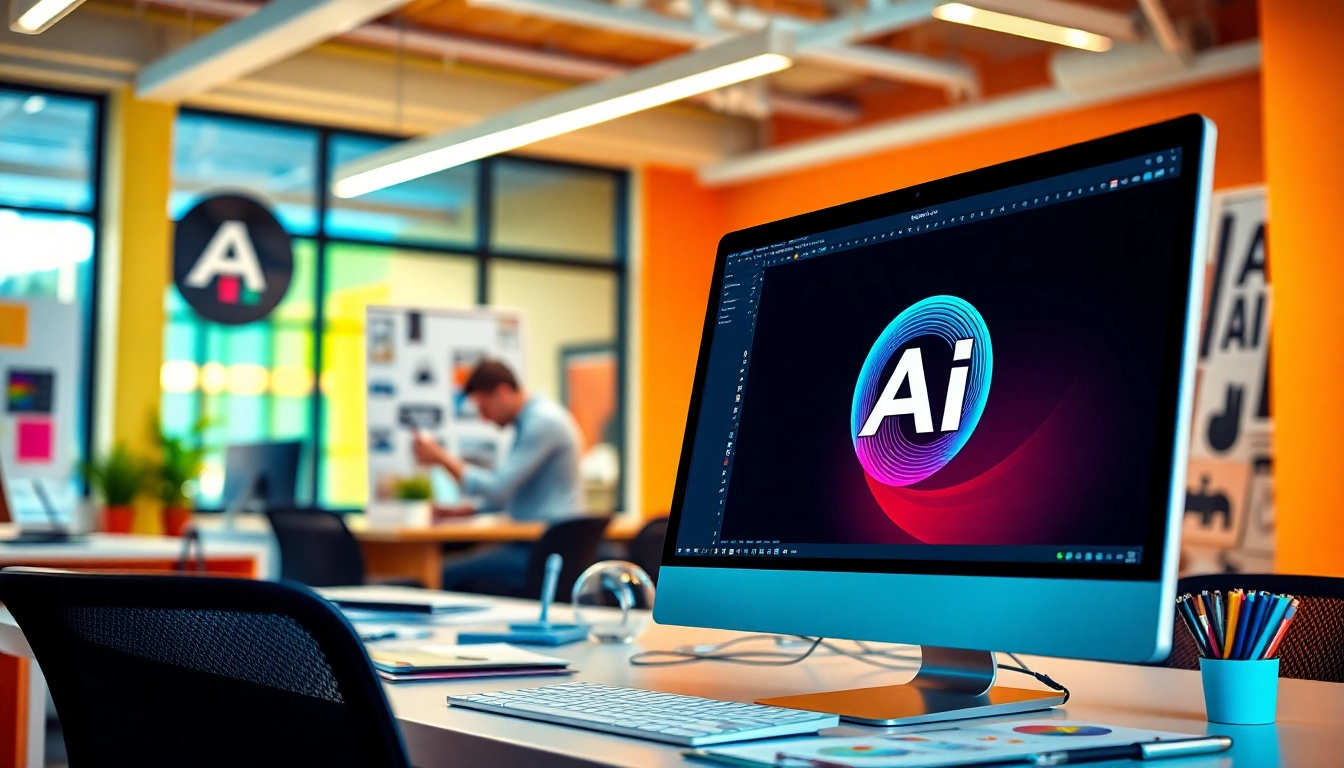Understanding Custom AI Logo Design
What Is Custom AI Logo Design?
Custom AI logo design refers to the innovative approach of creating logos using artificial intelligence technologies. Unlike traditional logo design, which often involves a lengthy process of brainstorming, drafting, and revising by skilled designers, AI-powered tools streamline this process, enabling businesses to generate unique logos within minutes. These systems utilize algorithms that analyze vast datasets of the design elements and trends to produce logos that are visually appealing and aligned with the user’s brand identity.
Benefits of Using AI for Logo Creation
The rise of custom AI logo design offers numerous advantages for businesses seeking to establish their brand identity:
- Speed: AI logo generators can produce multiple logo options in seconds, dramatically reducing the design timeline.
- Cost-Effective: Using AI eliminates the need for expensive design services, allowing startups and small businesses to manage budgets more effectively.
- Endless Variations: AI can generate countless variations of a logo based on user input. This allows businesses to explore numerous avenues for their brand without the usual design limitations.
- Accessibility: Even those without design experience can create professional logos, as AI tools are designed to be user-friendly and intuitive.
- Consistency: By following design principles, AI tools can help ensure that logos maintain a level of professionalism and clarity that aligns with branding standards.
Key Features to Look For in an AI Logo Generator
When selecting an AI logo generator, businesses should consider several key features to ensure they choose the best tool for their needs:
- Customization Options: Look for tools that allow you to customize colors, fonts, shapes, and layouts to reflect your brand accurately.
- Quality of Designs: Evaluate the design output quality to ensure that it meets professional standards and effectively communicates your brand message.
- User Interface: The tool should have an intuitive interface that facilitates ease of use for those with varying levels of design experience.
- File Formats: Ensure the tool provides logos in multiple file formats, such as PNG, SVG, and JPEG, for flexible usage across different mediums.
- AI Learning: The best platforms continually learn from user input, improving their suggestions and design recommendations over time.
Steps to Create Your Custom AI Logo
Defining Your Brand Identity
The first step in creating a custom AI logo involves defining your brand identity. Understand your business values, target audience, and market positioning. Consider what you want your logo to convey in terms of your brand personality. Create a clear description of your brand’s attributes, such as innovative, trustworthy, or youthful. This clarity will aid the AI tool in generating relevant and resonant design options.
Choosing the Right Logo Maker Tool
Selecting the appropriate AI logo maker is crucial in achieving the desired outcome. Research different tools based on the features mentioned earlier. Consider platforms like Canva, LogoAI, and Looka, which have gained positive recognition for their customizable options and user-friendly interfaces. Read reviews or engage in discussions on forums like Reddit to gauge the experiences of other users.
Implementing Your Design Ideas
With your brand identity in hand and the right tool selected, it’s time to implement your design ideas. Input relevant keywords, select design elements, and choose color palettes that align with your brand identity. Review the generated logos, and make adjustments as necessary. Most AI tools provide options to edit shapes, add text, or alter colors, enabling you to create a logo that feels uniquely yours.
Best Practices for Effective AI Logo Design
Maintaining Consistency in Branding
A logo represents a brand’s visual identity, making consistency crucial. Ensure that your logo aligns with the overall branding elements, such as color schemes, typography, and imagery used across your marketing materials. Consistent branding fosters recognition and trust among consumers, as it keeps your brand image cohesive across various platforms.
Design Trends for 2024
Staying updated with design trends is fundamental to keeping your brand’s image fresh and relevant. For 2024, look for trends such as:
- Minimalism: A clean and simple design often communicates stronger messages.
- Dynamic Logos: Logos that can evolve and change shape based on audience interaction or context are becoming increasingly popular.
- 3D Elements: Incorporating three-dimensional aspects can add depth and dimension to logos, attracting attention and engagement.
- Hand-Drawn Elements: A shift towards more personalized, handcrafted designs can evoke emotional connections with consumers.
Testing and Gathering Feedback
Before officially launching your logo, test it among a small audience or even within your team. Gather feedback on the design, relating to how they perceive your brand message and whether the logo resonates with them. This insight can help identify any adjustments needed before completing the design, ensuring that the final product meets your goals and expectations.
Exploring High-Quality Custom AI Logo Design Examples
Successful Case Studies
Examining successful case studies of businesses that have utilized custom AI logo design can provide insights into effective strategies. For instance, small startups that initially utilized AI tools to create their logos later transitioned to refining those logos further as they developed their brand identity. These cases highlight the importance of evolving your design as your business grows.
Anatomy of a Great Logo
An excellent logo incorporates several key elements: simplicity, memorability, timelessness, versatility, and appropriateness. The most iconic logos, such as Nike’s Swoosh or Apple’s apple, break down these features effortlessly. A great logo should seamlessly capture the essence of your brand while being easily recognizable across various platforms and sizes.
How AI Contributions Transform Brand Identity
The contributions of AI in logo design can significantly alter how brands communicate with their audience. With the ability to analyze consumer trends and preferences, AI can help create logos that not only resonate but also adapt over time. This adaptive quality allows businesses to pivot swiftly in response to market feedback, maintaining relevance in a rapidly evolving digital landscape.
Leveraging AI Tools for Continuous Design Improvement
Regular Updates and Design Refreshes
Continuity and evolution are vital in maintaining an effective logo. Regular updates based on new trends, brand positioning changes, or consumer feedback ensure that your logo remains relevant. AI tools can assist in this aspect, offering redesign options based on established frameworks while still allowing entrepreneurs to maintain creative control.
Integrating Feedback Loops
Incorporate feedback loops into your logo design process by continuously seeking input from customers, stakeholders, and design professionals. This technique helps brands refine their logos and adapt to changes in perception over time. AI tools can facilitate this by analyzing engagement metrics and suggesting design alterations based on user interaction with the logo.
Exploring New AI Technologies in Logo Design
As the landscape of AI design continues to evolve, staying informed about new technologies that enhance logo creation is essential. Advanced machine learning algorithms and generative design capabilities enable AI tools to create logos that dynamically adapt to user preferences and emerging trends. Engaging with the latest AI innovations not only enhances your design process but also ensures that your brand remains at the forefront of the industry.



